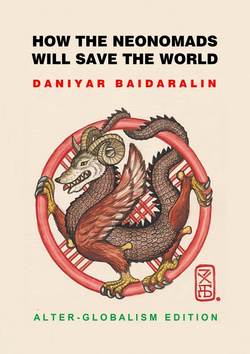Читать книгу How the Neonomads will save the world. Alter-globalism edition - Daniyar Z Baidaralin - Страница 12
THE CONCEPT: EURASIAN NOMADIC CIVILIZATION
Sports and games
ОглавлениеA big part of nomadic leisure time was spent in highly developed traditional sports and games. The sports always played a special role in the nomadic lifestyle. Every event, every celebration must have had sporting events. The EN invented myriad of sporting games and competitions, of which only a fracture survived and known today, but it was enough to establish the World Nomadic Games that first took place in Kyrgyzstan in 2014.
The EN games could be roughly divided into a few categories: games involving horses, military games, wrestling and fist-fighting, and individual and team competitions of various kinds.
The horse sports were particularly developed since the Eurasian Nomads were the history’s most prominent horse people, the true Centaurs. They included various types of horse races, such as speed, distance, and insurance races. There were team sports, such as kókpar (goat dragging), horseback wresting, and picking up small object from the ground on full gallop, chasing a girl on a horse, horseback polo, and many more.
The military sports included horseback and foot archery of many types, competitions with spears and lances, javelin throwing, jousting, and etc. The nomads invented knightly tournaments, where the competitors, armed with dull spears or lances, tried to knock each other off the horse. These and other types of jousting were played as duels or in teams, and served as training exercises for future combat use.
These nomadic tournaments migrated to Europe together with horse-riding culture, and became the foundation of the future European knightly tournaments; except for in Europe it was only the privilege of the wealthy, while in Eurasian Steppes every nomad could participate and win regardless of his or her status. In Kazakhstan these tournaments were popular among the population and existed until 1920s, when they were finally officially banned by the Soviets.
The foot military disciplines had a few types of fist-fighting and wrestling, one of which survived today as qazaqsha kures (Kazakh wrestling). Of course there was fencing, dueling, swordplay, spearplay, axeplay and other types of combat sports performed both on foot or horseback. The nomads were skillful warriors who knew their way with all types of weapons. This was a universal matter of survival.
And when the Eurasian Nomads weren’t busy moving, fighting, watching after their cattle, or partying, playing music, reciting poetry, playing sports or taking part in military competitions, they entertained each other by playing regular games. There was enormous amount of games that the nomads invented, borrowed, and helped to spread around the Afro-EuroAsia. There were riddles and puzzles, jokes and mockery, active games involving throwing objects, kids games such as hide and seek, tag, tug of war and its variations, and etc. There were even romantic and erotic games for young adults, and brain-stimulating games for seniors to help them to keep their memory sharp. And many, many more.
The nomads also tried to turn every work into a game. During the intense Kósh times, the EN wore their best clothes, garments, and accessories, and travelled merrily and loudly, while signing song, and bursting into horse races or chases. The youth used the Kóshes as occasions to meet new friends and make romantic connections. On the camping grounds, when the nomads had to perform some labor-intensive group tasks, such as felt-making, they would engage is games, specifically designed to make their work go faster and merrier; as opposed to dull everydayness routines of the SC farmers or craftsmen that performed repetitive tasks all their lives.
The nomads knew how to spend their time well, and they had the means for that: time and wealth. They lived in the world where every winter could be their last one: the nomads never had more than a few months-worth of food stores, so there could be hunger in the spring; where the enemies could strike at any time and there were no walls to hide behind, where the disease could wipe out the entire regions, as with the infamous Black Death in 14th century that started somewhere in Central Asia, got spread along the entire Silk Road and wiped around almost a half of the population of Eurasia.
Given all that, the nomads tried to value every living minute, and they did that by creating a vastly developed culture.
